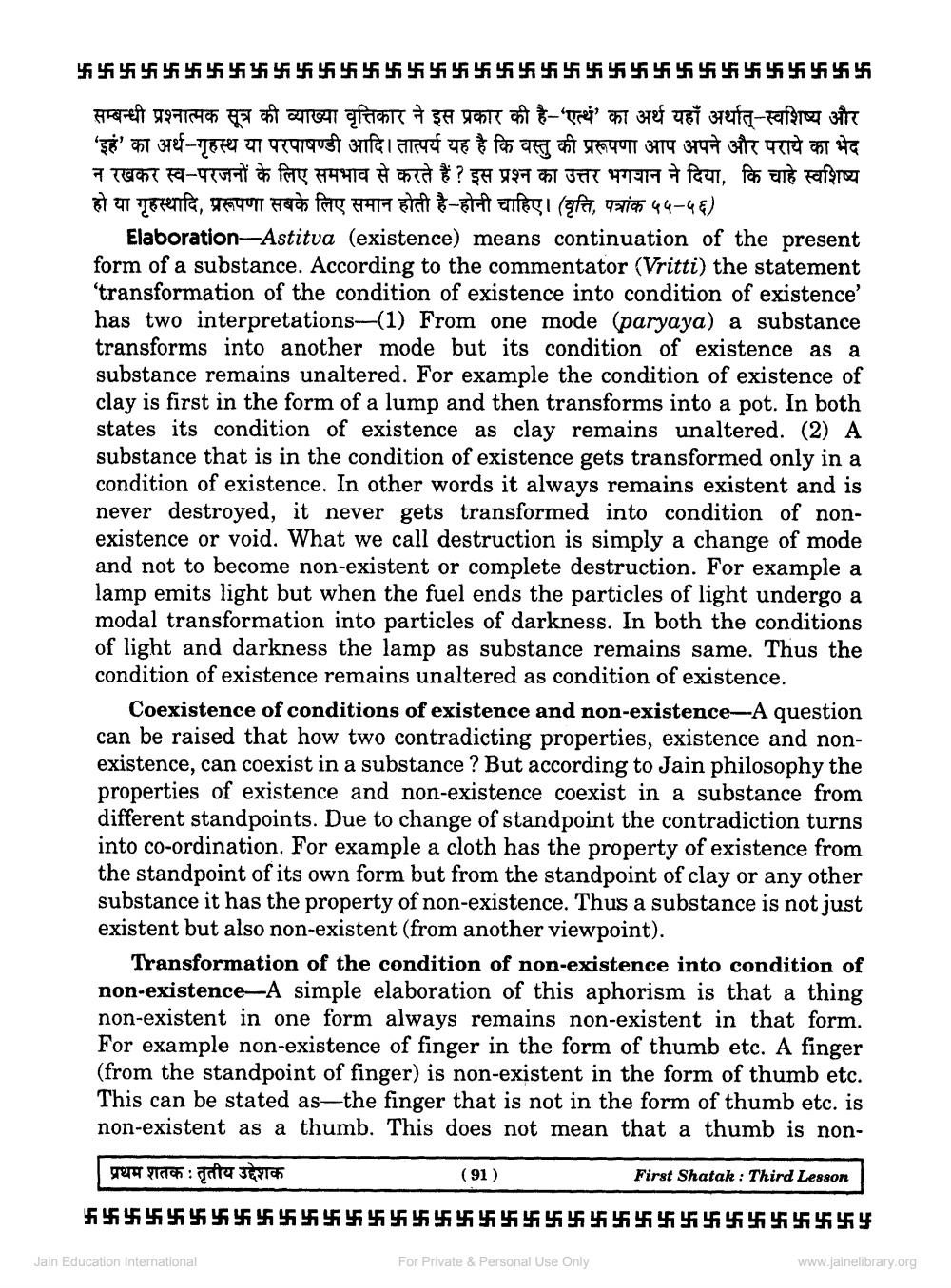________________
%%%%%%%%%%55555555555555555555555
सम्बन्धी प्रश्नात्मक सूत्र की व्याख्या वृत्तिकार ने इस प्रकार की है-'एत्थं' का अर्थ यहाँ अर्थात्-स्वशिष्य और 'इहं' का अर्थ-गृहस्थ या परपाषण्डी आदि। तात्पर्य यह है कि वस्तु की प्ररूपणा आप अपने और पराये का भेद न रखकर स्व-परजनों के लिए समभाव से करते हैं ? इस प्रश्न का उत्तर भगवान ने दिया, कि चाहे स्वशिष्य हो या गृहस्थादि, प्ररूपणा सबके लिए समान होती है-होनी चाहिए। (वृत्ति, पत्रांक ५५-५६)
Elaboration — Astitva (existence) means continuation of the present form of a substance. According to the commentator (Vritti) the statement 'transformation of the condition of existence into condition of existence' has two interpretations-(1) From one mode (paryaya) a substance transforms into another mode but its condition of existence as a substance remains unaltered. For example the condition of existence of clay is first in the form of a lump and then transforms into a pot. In both states its condition of existence as clay remains unaltered. (2) A substance that is in the condition of existence gets transformed only in a condition of existence. In other words it always remains existent and is never destroyed, it never gets transformed into condition of non
tence or void. What we call destruction is simply a change of mode and not to become non-existent or complete destruction. For example a lamp emits light but when the fuel ends the particles of light undergo a modal transformation into particles of darkness. In both the conditions of light and darkness the lamp as substance remains same. Thus the condition of existence remains unaltered as condition of existence.
Coexistence of conditions of existence and non-existence-A question can be raised that how two contradicting properties, existence and nonexistence, can coexist in a substance ? But according to Jain philosophy the properties of existence and non-existence coexist in a substance from different standpoints. Due to change of standpoint the contradiction turns into co-ordination. For example a cloth has the property of existence from the standpoint of its own form but from the standpoint of clay or any other substance it has the property of non-existence. Thus a substance is not just existent but also non-existent (from another viewpoint).
Transformation of the condition of non-existence into condition of non-existence-A simple elaboration of this aphorism is that a thing non-existent in one form always remains non-existent in that form. For example non-existence of finger in the form of thumb etc. A finger (from the standpoint of finger) is non-existent in the form of thumb etc. This can be stated as the finger that is not in the form of thumb etc. is non-existent as a thumb. This does not mean that a thumb is non
| प्रथम शतक : तृतीय उद्देशक
( 91 )
First Shatak : Third Lesson
fi 44545454545454545454545454545454545454545454545414141414141414141414
Jain Education International
For Private & Personal Use Only
www.jainelibrary.org




